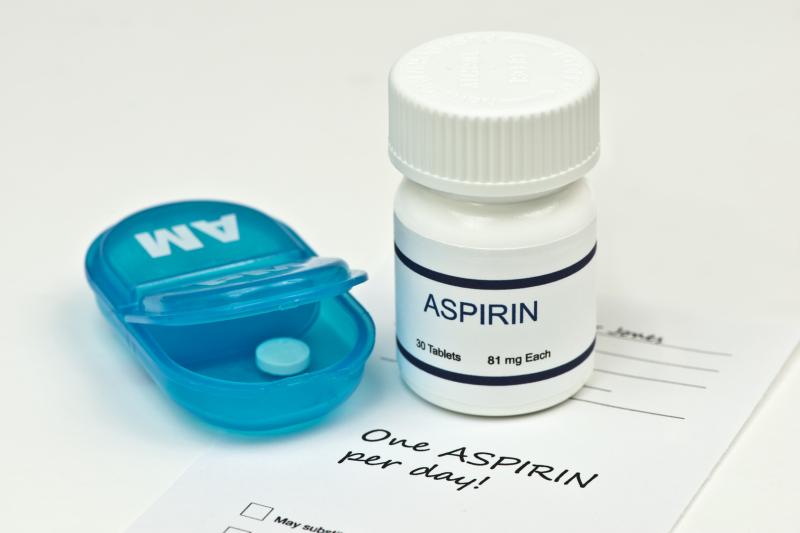 For nearly 100 years, aspirin has been a common drug used for pain relief and fever treatment.
For nearly 100 years, aspirin has been a common drug used for pain relief and fever treatment.Patients with chronic coronary (CAD) or peripheral artery disease (PAD) treated with the combination of rivaroxaban and aspirin are at greater risk of bleeding than those treated with aspirin alone, according to a study. Major bleeding usually occurs during the first year of treatment, arises in the gastrointestinal (GI) tract and can be managed using conventional supportive therapies.
“In contrast, the reduction in cardiovascular death, stroke or myocardial infarction continued to accrue after the first year, suggesting accumulating net clinical benefit over time,” the researchers said.
A total of 27,395 patients (mean age, 68 years; 22 percent women) were enrolled in this study, of whom 18,278 were randomly assigned to the combination of rivaroxaban and aspirin or to aspirin alone. Mean follow-up was 23 months.
The combination treatment compared with aspirin alone led to an increase in modified International Society on Thrombosis and Hemostasis (ISTH) major bleeding (3.1 percent vs 1.9 percent; hazard ratio [HR], 1.70, 95 percent CI, 1.40–2.05; p<0.001), ISTH major bleeding (2.3 percent vs 1.3 percent; HR, 1.78, 1.41–2.23; p<0.0001) and minor bleeding (9.2 percent vs 5.5 percent; HR, 1.70, 1.52–1.90; p<0.0001). [J Am Coll Cardiol 2019;74:1519-1528]
The need for any red cell transfusion also increased with the combination of rivaroxaban and aspirin compared with aspirin alone (1.0 percent vs 0.5 percent; HR, 1.97, 1.37–2.83; p=0.0002).
Most major bleeding events were from the GI tract (1.5 percent vs 0.7 percent; HR, 2.15, 1.60–2.89; p<0.001), had mild or moderate intensity, and occurred predominantly during the first year after randomization. The most common sites of major GI bleeding were as follows: stomach, duodenum, colon and rectum. About a third were from an unknown GI site. Additionally, patients who had major bleeding received platelets, clotting factors or other haemostatic agents.
Information on the use of investigations for GI bleeding were not collected, but it is likely that “most unknown bleeding among those who underwent investigation was from pathology in the small bowel, including mass lesions, inflammation, or vascular abnormalities not detected on routine upper or lower GI tract endoscopic examination,” the researchers said. [Gastroenterol Clin N Am 2005;34:679-698]
The early excess bleeding could be explained by the revelation of underlying pathology with more intensive antithrombotic therapy, they noted. “Once this pathology is unmasked, rates of bleeding are similar by treatment group because treatment does not affect the rate of the development of new pathology, which is similar in both groups.”
Early bleeding has also been reported in trials of warfarin, antiplatelet therapy with combination of aspirin and clopidogrel, or aspirin alone, according to the researchers. [Lancet 1996;348:423-428; J Am Coll Cardiol 2007;49:1982-1988; Lancet 2012;379:1602-1612]
“Future studies should explore whether the combination of rivaroxaban plus aspirin for secondary prevention of CV disease can be extended to patients at high risk of bleeding, such as those with a history of bleeding or with end-stage kidney disease,” they added.